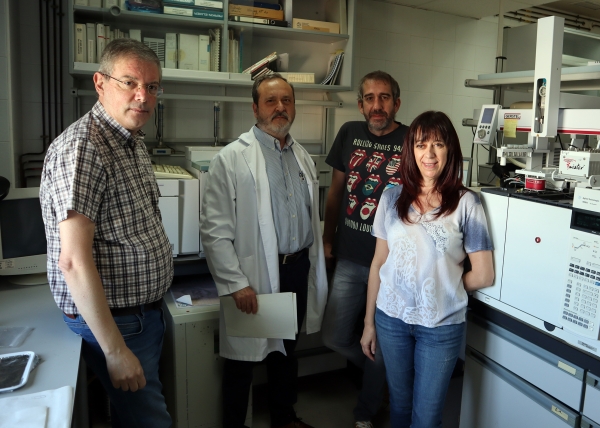Sparkling wines are on the rise. After overcoming the traditional seasonality of their consumption, normally limited to the Christmas holidays and other celebrations, their consumption has shot up. Since 2011, the AGR-146 research group in Viticulture and Enology, "Vitenol", at the Department of Agricultural Chemistry, Soil Science and Microbiology at the University of Cordoba, has carried out studies on this type of wine, but its latest one has taken a step further, focused on making sparkling wines using grape varieties traditionally used in the production of still wines.
Thus, they chose Pedro Ximénez grape wines, grown in the Montilla-Moriles D.O., and two yeast strains; one selected in this area, and the other in the Cava D.O., to produce an autochthonous sparkling wine.
The current head of the team, Juan Moreno, Professor of Agricultural Chemistry, explains that the main objective of the research conducted has been to reduce the degree of subjectivity involved in evaluating the quality of these wines by tasting them. It has also sought to improve understanding of the perception of the quality of sparkling wines during their aging, relating the analysis of aroma compounds to sensorial characteristics, pointed out Professor of Oenology Rafael A. Peinado.
These studies continued from 2018 to 2020 thanks to an innovation and transfer project (CDTI) in collaboration with the Pérez-Barquero de Montilla Group of companies. The wines obtained through this CDTI project were very well received by the evaluators of the R&D project, who described them as novel, different, fresher and more pleasant wines than other sparkling ones made in regions traditionally producing this type of wine.
This was not the only innovation, however; for the first time in history, a flor (layer of yeast) was used for the production of sparkling wines. This yeast has traditionally been used for the biological aging of sherries, and has properties that facilitate the disgorging operation, which consists of removing the lees from the bottle. "This yeast has been compared to a typical sparkling yeast, and it has been observed that it has a series of advantages over traditional yeasts in the production of foam and aromas", explained Microbiology Professor Juan Carlos García Mauricio.
Professor Teresa García Martínez explained that the team is applying Precision Oenology by using a specific, indigenous yeast at just the right time "to create a new product and expand the range of wines made in the Montilla-Moriles D.O.".
The result is the production of a new regional sparkling wine made from local products thanks to collaboration with the Pérez Barquero winery (Montilla). This has been a challenge, as one of the problems with sparkling wines is that there are few yeasts on the market for this type of production, which makes it a fairly homogeneous product. Thanks to the studies carried out, the collection of yeasts for the production of sparkling wines, and the possibilities for their commercialization, have been expanded.
Martínez-García R., Mauricio J.C., García-Martínez T., Peinado R.A., Moreno J., (2021) Towards a better understanding of the evolution of odour-active compounds and the aroma perception of sparkling wines during ageing. Food Chemistry DOI:10.1016/j.foodchem.2021.129784


